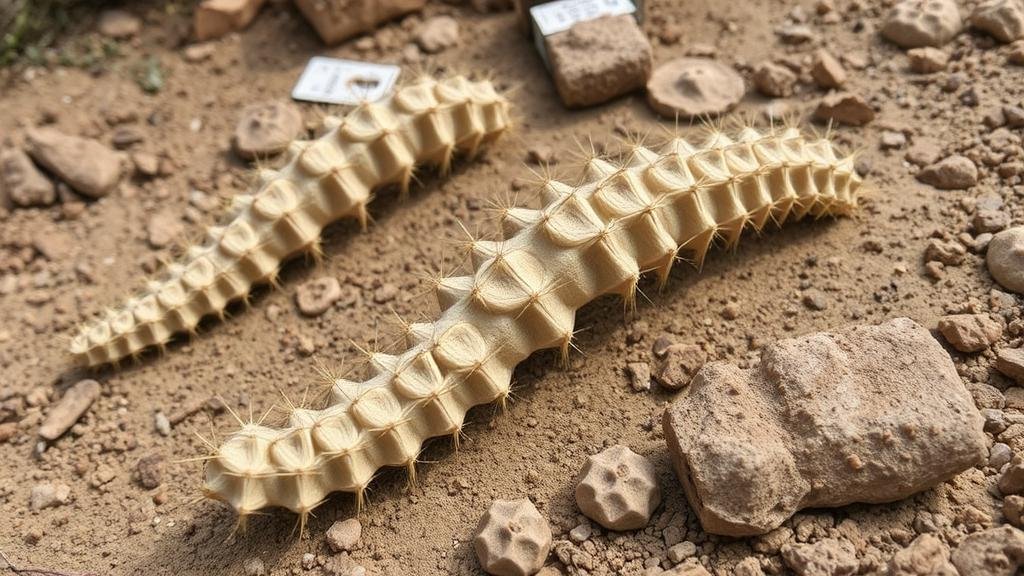Unearthing petrified cactus skeletons in the fossil beds of the Mimbres Valley.
Unearthing Petrified Cactus Skeletons in the Fossil Beds of the Mimbres Valley
Rockhounds and mineral collectors seeking unique specimens have an extraordinary opportunity in the Mimbres Valley, a region renowned for its rich geological history. Among its many fossilized treasures, petrified cactus skeletons stand out for both their rarity and their fascinating story of prehistoric life in the area. This article delves into the specifics of these specimens, offering valuable insights for collectors and enthusiasts alike.
The Geological Significance of the Mimbres Valley
The Mimbres Valley, located in southwestern New Mexico, is part of the larger Basin and Range Province. This region is characterized by a variety of geological formations, including volcanic tuff, sedimentary layers, and metamorphic rocks. The fossil beds in the valley are primarily composed of sediments deposited during the Miocene epoch, approximately 23 to 5 million years ago.
This period was significant for the evolution of plant life, leading to the emergence of many modern species, including cacti. The conditions in the Mimbres Valley were ideal for the preservation of these unique plants, resulting in the formation of petrified wood, including petrified cactus skeletons.
Understanding Petrification
Petrification is a process in which organic material is gradually replaced by minerals over time, resulting in the formation of stone-like structures. This phenomenon occurs when groundwater rich in minerals permeates the plant material, depositing silica, calcite, or other minerals into the tissues. The process can take thousands to millions of years.
For collectors, understanding this process is crucial. Petrified cactus specimens may still retain some of their original structure, including the distinctive ribbed appearance of cactus plants. e features make them not only scientifically valuable but also visually striking as collectible items.
Finding Petrified Cactus in the Field
Collectors interested in searching for petrified cactus skeletons can significantly enhance their experiences by adhering to a few essential guidelines:
- Location: Focus your search in the Mimbres Valley, particularly around areas with exposed sedimentary rock layers.
- Research: Study local geological maps and resources to identify fossil-rich zones. The area around the Gila National Forest is often fruitful for fossil hunting.
- Tools: Bring basic tools such as a rock hammer, chisel, and safety goggles. Having a field guide on local geology can provide context and aid in identification.
Preservation and Ethical Considerations
When collecting fossils, it is vital to maintain ethical practices. Always obtain permission if you are on private land, and adhere to local laws governing fossil collection. Scientific preservation techniques should also be observed to maintain the integrity of any specimens you collect.
After excavation, it is advisable to gently clean your petrified cactus skeletons with a soft brush to remove dirt and debris. For long-term preservation, consider displaying them in controlled environments to minimize exposure to moisture and UV light.
Real-World Applications and Research Opportunities
The significance of petrified cactus skeletons extends beyond mere aesthetics for collectors; they also present opportunities for scientific research. Paleobotanists utilize these specimens to study climate change, biogeography, and the evolution of desert ecosystems.
For example, understanding the characteristics of petrified cacti can provide insights into ancient climate conditions. While modern cacti often thrive in arid environments, their prehistoric relatives may have thrived in different climatic contexts, thus illustrating the evolution of plant adaptations.
Actionable Takeaways for Collectors
For rockhounds and mineral collectors interested in unearthing petrified cactus skeletons, consider the following actionable steps:
- Educate yourself on local geology and fossil formations.
- Equip yourself with appropriate tools and safety gear before heading out.
- Respect ethical guidelines during your fossil-hunting adventures.
- Network with local fossil clubs or online communities for shared knowledge and resources.
Ultimately, the Mimbres Valley offers an inviting landscape for rock collectors aspiring to uncover the mystique of petrified cactus. With careful planning, ethical collecting, and a genuine curiosity for prehistoric life, the potential for discovery is vast. Happy hunting!



